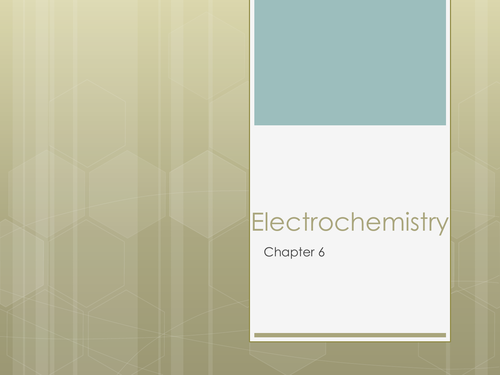


A classroom lesson presentation consisting of 44 slides covering all aspects of electrochemistry, including how to define and determine an electrolyte, the definition of a molten and aqueous solution, the definition and process of electrolysis, determining the anode and cathode, factors affecting the selection of products of electrolysis such as types of electrolyte (molten, aqueous solution), the position of metals in the reactivity series, the concentration of the electrolyte, the type of electrodes used (electroplating) and the benefits of electroplating.
Furthermore, the lesson slides include the construction of a voltaic cell, the function and usage of a porous pot and salt bridge, the method of selecting the anode and cathode based on the reactivity series, the observations of the displacement reaction, the voltage generated from the displacement reaction to act as a voltaic cell. The slides do explain the construction of half equations and ionic equations in electrolysis and voltaic cells.
Content of the slides are suited for 5-6 consecutive classes. Suited for students in KS 4.
Get this resource as part of a bundle and save up to 55%
A bundle is a package of resources grouped together to teach a particular topic, or a series of lessons, in one place.
Something went wrong, please try again later.
This resource hasn't been reviewed yet
To ensure quality for our reviews, only customers who have purchased this resource can review it
Report this resourceto let us know if it violates our terms and conditions.
Our customer service team will review your report and will be in touch.